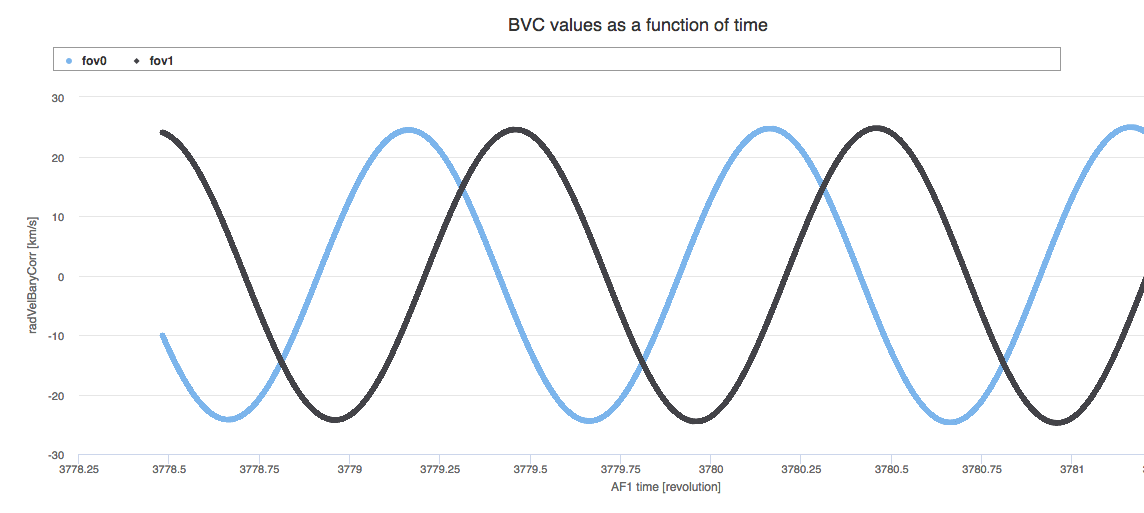6.4.8 Multi-transit analysis
Multi-transit analysis receives single-transit radial velocities and their uncertainties from STA (see Section 6.4.7). The STA Gaia-centric radial velocities are converted to barycentric by adding their barycentric radial velocity correction, which can range from km s to km s as a function of Gaia’s six hour revolution (Figure 6.6).
The radial velocities published in Gaia DR2 are obtained by taking the median of the STA barycentric single-transit radial velocities (Equation 6.1). is computed only if the number of transits for which a valid has been obtained is (when the mean value is computed). Not all the transits entering the pipeline result in a . Some transits have been removed from the pipeline upstream STA before calculating (see Section 6.4.4). The transits flagged as double-lined spectra are also excluded.
The uncertainty provided in Gaia DR2, is given by Equation 6.2, where is the number of transits used to obtain . is also provided in Gaia DR2.
